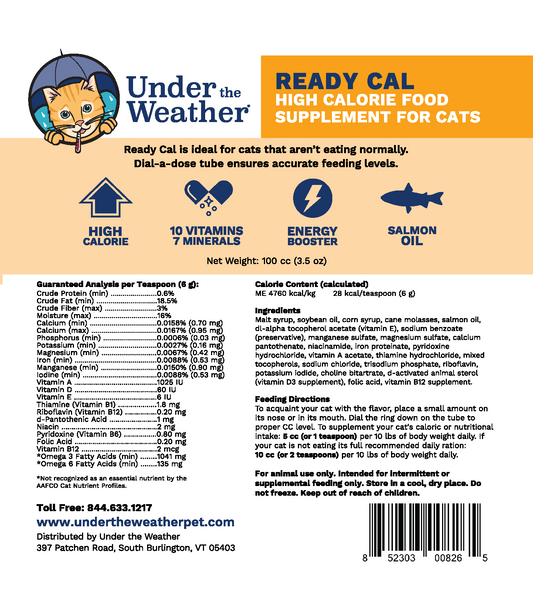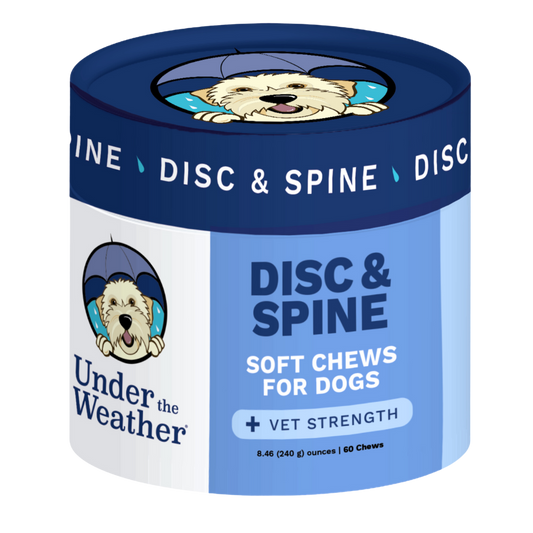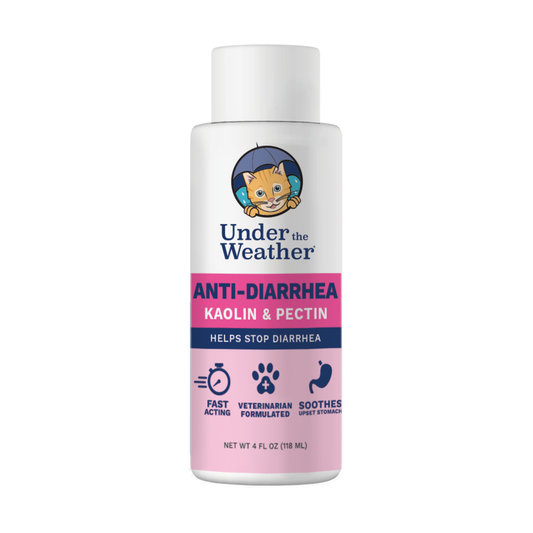In certain situations, dogs may require syringe feeding to ensure they receive the necessary nutrition. Whether it's due to health conditions or temporary circumstances, syringe feeding can be a challenging yet essential task for pet owners. The canine-friendly crew at Under the Weather is here to provide you with essential tips and guidelines to successfully syringe feed your furry friend.

Understanding the Need for Syringe Feeding in Dogs
Syringe feeding becomes necessary when a dog is unable to eat or swallow food on their own. This method of feeding provides a lifeline for our furry friends who are facing various health conditions or temporary situations that hinder their ability to consume food in the traditional way.
Health Conditions Requiring Syringe Feeding
Some health conditions that may necessitate syringe feeding include:
- Severe dental problems: Imagine the discomfort a dog experiences when their teeth are in excruciating pain, making it impossible for them to chew their food. Syringe feeding ensures that they still receive the necessary nutrients while their dental issues are being addressed.
- Neurological disorders affecting the ability to chew or swallow: Dogs suffering from neurological disorders may struggle with the coordination required for chewing and swallowing. Syringe feeding offers a practical solution to ensure they receive the sustenance they need to thrive.
- Post-surgical recovery: After undergoing surgery, dogs may experience difficulty eating due to pain or discomfort. Syringe feeding provides a gentle and controlled way to nourish them during their recovery period.
- Esophageal or throat obstructions: Blockages in the esophagus or throat can prevent food from passing through, making it impossible for dogs to eat normally. Syringe feeding allows for carefully administered nutrition until the obstruction is resolved.
Temporary Situations for Syringe Feeding
Temporary situations where syringe feeding may be necessary include:
- Loss of appetite due to illness or medication side effects: Just like humans, dogs can experience a loss of appetite when they are feeling under the weather. Syringe feeding ensures they receive the essential nutrients they need to regain their strength and recover.
- Transitioning to solid foods during the weaning process: When puppies are being weaned off their mother's milk and introduced to solid foods, syringe feeding can play a vital role in facilitating this transition. It allows for a gradual introduction of different textures and flavors, ensuring the puppies adapt smoothly to their new diet.
- Treating specific dietary allergies or intolerances: Dogs with specific dietary allergies or intolerances may require a carefully controlled diet. Syringe feeding allows pet owners to provide tailored nutrition, ensuring their furry companions receive the necessary sustenance without triggering any adverse reactions.
By understanding the various health conditions and temporary situations that may require syringe feeding, pet owners can ensure their beloved dogs receive the proper care and nutrition they need to thrive. Syringe feeding serves as a valuable tool in supporting dogs during challenging times, helping them regain their strength and vitality.
Preparing for Syringe Feeding
Before you begin syringe feeding your dog, it's important to ensure you have the necessary equipment and prepare the food appropriately.
Syringe feeding can be a crucial part of caring for a sick or recovering dog. Whether your furry friend is experiencing difficulty eating due to illness, injury, or surgery, or simply needs some extra help getting the nutrition they need, syringe feeding can provide a lifeline. However, it's essential to approach this task with care and attention to detail to ensure your dog's well-being.
Choosing the Right Syringe
Selecting the appropriate syringe for your dog is vital to ensure a smooth and comfortable feeding experience. Smaller dogs may require smaller syringes with finer needles, allowing for precise control and a gentler administration of the food. On the other hand, larger dogs may need larger syringes to accommodate a greater volume of food.
When choosing a syringe, opt for one with clear markings that allow for accurate measurement of the food. This will help you keep track of the amount consumed and ensure your dog receives the proper portion size.
Preparing the Food for Syringe Feeding
The food you use for syringe feeding should be in a liquid or semi-liquid form, making it easy to administer through the syringe. There are two main options when it comes to the food itself: commercially available dog food specifically designed for syringe feeding or a homemade mixture approved by your veterinarian.
If you decide to go with commercially available dog food, look for brands that offer a high-quality, easily digestible formula. These specially formulated foods often come in a variety of flavors, ensuring that you can find one that appeals to your dog's taste buds. It's always a good idea to consult with your veterinarian to determine the best brand and type of food for your dog's specific needs.
Alternatively, if you prefer to prepare a homemade mixture, it's crucial to work closely with your veterinarian to ensure that it meets your dog's nutritional requirements. Your vet can guide you on the appropriate ingredients, proportions, and preparation methods to ensure a balanced and nutritious meal for your furry companion.
The Process of Syringe Feeding Your Dog
Once you have all the necessary preparations in place, it's time to syringe feed your dog. Follow these steps for a safe and comfortable feeding experience.
Positioning Your Dog for Syringe Feeding
When syringe feeding, it's important to position your dog comfortably and securely. Find a quiet and calm place where your dog can relax and feel at ease without unnecessary distractions.
Creating a cozy environment can help reduce any stress or anxiety your dog may feel during the feeding process. Consider using a soft blanket or pillow to provide extra comfort. Additionally, make sure the room is free from distractions to help your dog focus on the feeding.
Administering the Food Safely and Comfortably
Gently hold your dog's head and insert the syringe into the side of their mouth. Slowly and steadily release the food, allowing your dog to swallow after each small portion.
It's important to be patient and gentle while administering the food. Take breaks if needed, allowing your dog to rest and relax between portions. This will help prevent any discomfort or stress during the feeding process.
Furthermore, be mindful of the temperature of the food. Ensure it is not too hot or too cold, as extreme temperatures can cause discomfort or even burn your dog's mouth. A lukewarm temperature is usually the most comfortable for them.
Avoid forcing the food or administering it too quickly, as this can cause discomfort or choking. Remember to give your dog time to swallow and breathe between each portion. This will help ensure a safe and comfortable feeding experience for both you and your furry friend.

Three very young black puppies lie side by side in the grass while the puppy on the right sticks its tongue out.
Post-Feeding Care and Considerations
After syringe feeding, it's crucial to monitor your dog's reaction and take certain steps to ensure their well-being.
Monitoring Your Dog's Reaction Post-Feeding
Observe your dog for any signs of distress or adverse reactions following syringe feeding. These signs may include vomiting, diarrhea, or difficulty breathing. If you notice any concerning symptoms, contact your veterinarian immediately.
Additionally, it's important to keep an eye on your dog's overall behavior and mood after feeding. Are they acting lethargic or unusually restless? Are they showing signs of discomfort or pain? These observations can provide valuable insights into your dog's well-being and help you address any potential issues promptly.
When to Consult a Veterinarian
If you're unsure about the syringe feeding process or your dog's specific dietary needs, consult a veterinarian for guidance. They can provide valuable advice tailored to your dog's health condition or temporary situation.
Furthermore, a veterinarian can assess your dog's overall health and determine if there are any underlying medical conditions that may be contributing to the need for syringe feeding. They can also help you establish a feeding schedule that meets your dog's nutritional requirements while considering any dietary restrictions or allergies.
Remember, your veterinarian is your best resource when it comes to your dog's health. They have the knowledge and expertise to guide you through the post-feeding care process and ensure your dog's well-being is prioritized.
Frequently Asked Questions about Syringe Feeding Dogs
Can All Dogs Be Syringe Fed?
Syringe feeding may not be suitable for all dogs. Some dogs are better candidates for alternative feeding methods or may require tube feeding for their specific needs. Consult your veterinarian to determine the best feeding approach for your dog.
How Often Should I Syringe Feed My Dog?
The frequency of syringe feeding depends on your dog's health condition and nutritional requirements. Your veterinarian will provide specific instructions regarding the frequency and quantity of syringe feeding sessions to ensure optimal nourishment for your dog.
It is important to note that the frequency of syringe feeding may vary depending on the individual needs of your dog. For example, puppies who are recovering from surgery or illness may require more frequent feedings to aid in their recovery and growth. On the other hand, older dogs with certain medical conditions may benefit from smaller, more frequent meals throughout the day to prevent discomfort or digestive issues.
Additionally, the amount of food to be syringe fed can also vary. Your veterinarian will consider factors such as your dog's weight, age, and overall health condition to determine the appropriate quantity of food to be administered. It is crucial to follow these guidelines closely to ensure that your dog receives the necessary nutrients without overfeeding or underfeeding.
Remember, syringe feeding should always be done under the guidance of a veterinarian. They will assess your dog's specific needs and provide you with a tailored feeding plan to ensure their well-being and recovery.
Syringe feeding can be a challenging but essential task for dogs with certain health conditions or temporary situations. By understanding the need for syringe feeding, preparing appropriately, following the correct process, and considering post-feeding care, you can provide the necessary nutrition and support for your beloved furry friend.
Every Sale Supports a Shelter Pet. Learn More.
Created in Vermont. Learn More.
Written by: Min Lee
If you suspect your pet is sick, call your vet immediately. For health-related questions, always consult your veterinarian, as they have examined your pet, know the pet's health history, and can make the best recommendations for your pet.














